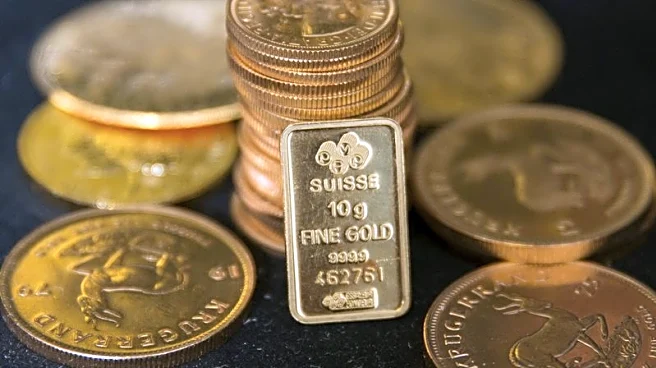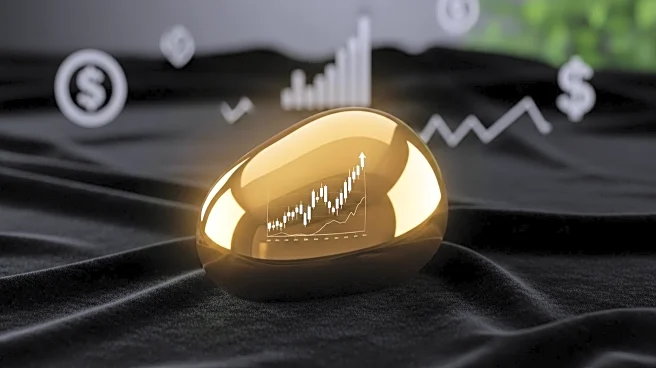What's Happening?
Goldman Sachs has increased its forecast for the price of gold in December 2026 to $4,900 per ounce, up from a previous estimate of $4,300. This adjustment is attributed to strong inflows into Western exchange-traded funds (ETFs) and anticipated central bank purchases. As of the latest trading, spot gold was valued at approximately $3,960 per ounce, following a recent peak of $3,977.19. The price of gold has surged by 51% this year, driven by robust central bank acquisitions, heightened demand for gold-backed ETFs, a weakening dollar, and growing interest from retail investors seeking protection against escalating trade and geopolitical tensions. Goldman Sachs projects that central bank purchases will average 80 metric tons in 2025 and 70 tons in 2026, with emerging market central banks expected to continue diversifying their reserves into gold.
Why It's Important?
The revised gold price forecast by Goldman Sachs underscores the increasing demand for gold as a safe-haven asset amid global economic uncertainties. This trend is significant for investors and financial markets, as it reflects a shift towards asset diversification in response to geopolitical tensions and currency fluctuations. The anticipated rise in central bank purchases and ETF holdings suggests a sustained interest in gold, which could influence market dynamics and investment strategies. The forecast also highlights the potential impact on the mining industry, as higher gold prices may drive exploration and production activities, benefiting companies involved in gold mining and related sectors.
What's Next?
The forecasted increase in gold prices may lead to strategic adjustments by investors and financial institutions, as they seek to capitalize on the anticipated growth in gold value. Central banks, particularly in emerging markets, are likely to continue diversifying their reserves, potentially increasing their gold holdings. This could further bolster the demand for gold, influencing market prices and investment flows. Additionally, the mining industry may experience increased activity, with companies potentially expanding operations to meet the rising demand for gold. Financial markets will closely monitor these developments, as they could have broader implications for global economic stability and investment strategies.











